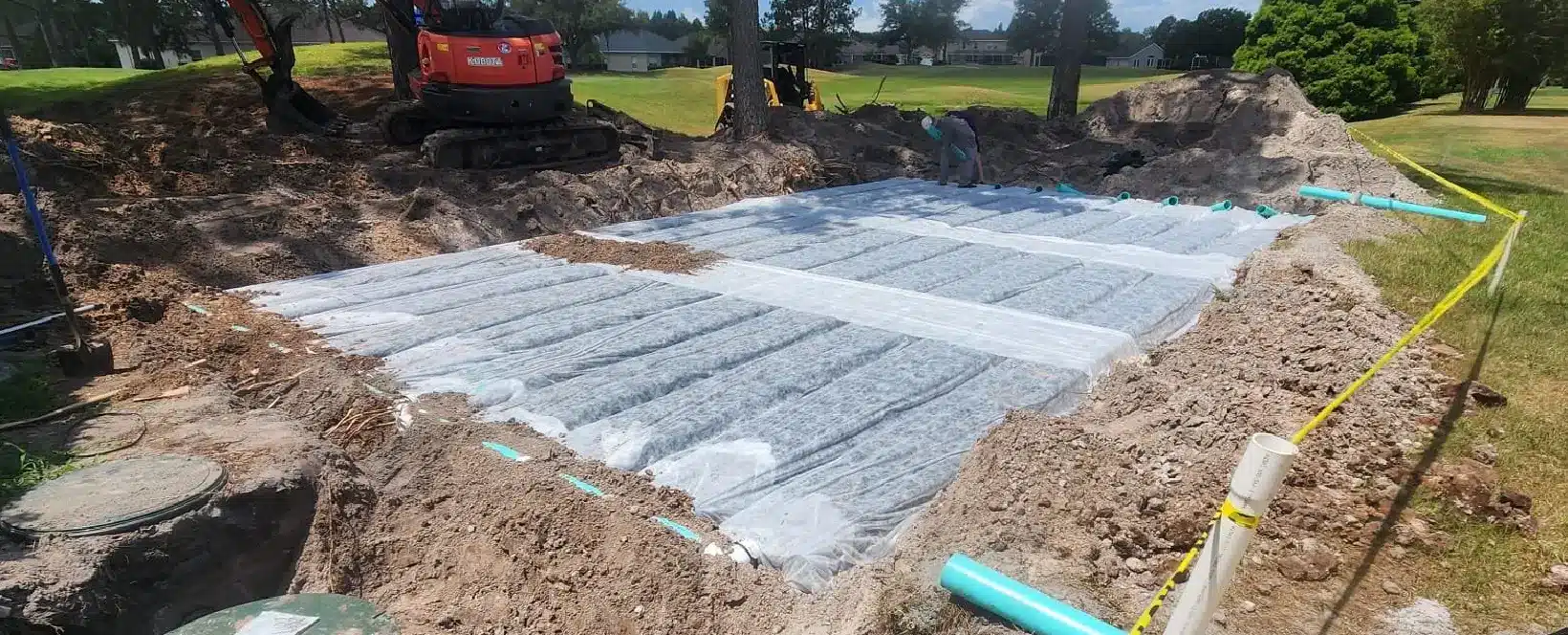When it comes to septic systems, the drainfield plays a critical role in the long-term functionality and environmental safety of your wastewater management. At ACE Septic & Waste, we encounter many great questions from homeowners and business owners alike. As part of our education series on drainfields, let’s talk about the lifespan of a drainfield and some of the factors that influence its lifespan.
Typical Lifespan of a Drainfield
Understanding the lifespan of your drainfield is crucial for preventing groundwater contamination and ensuring that your property remains safe and sanitary. The lifespan of a drainfield can vary significantly based on several factors, but a well-maintained and properly installed drainfield typically lasts between 15 to 25 years. Your drain field’s lifespan is affected by the following elements:
Soil Conditions
The surrounding soil is an essential element of your drainfield, helping to treat and disperse effluent. Soil rich in organic material tends to have better structure and microbial activity, enhancing effluent breakdown. Good soil structure also helps prevent compaction and maintain porosity. Sandy soils with good drainage capabilities tend to allow for a more effective filtration of effluent, which can prolong the life of the field. Clay soils, on the other hand, may lead to quicker system failure due to poor absorption qualities. The soil’s seasonal high water table will also factor in longevity. Not accounting for the seasonal water table during installation may result in a saturated drainfield, leading to system failure.
Drainfield Usage
Proper usage and maintenance of a drainfield involves managing the volume and type of waste introduced to the septic system. You can improve your drainfield by remembering the following:
- Water Conservation: One of the most common reasons for drainfield failure is overloading the system with more water than it can handle. High volumes of wastewater can saturate the soil, leading to backups and system failure. Efficient use of water through fixtures like low-flow toilets and showerheads and spreading out laundry throughout the week can help manage the flow to the septic system. Conserving water and repairing any household leaks can significantly extend the life of your drainfield.
- Waste Disposal Practices: What goes down the drains affects the drainfield. Avoid flushing anything other than human waste and toilet paper. Items like wipes (including “flushable” wipes), feminine hygiene products, and even certain types of toilet paper can clog the system. You should also avoid the disposal of non-biodegradable materials and chemicals, including excessive fats, oils, and grease (called FOGs). These can create blockages and contamination, which can degrade the system.
- Chemical Use: Household chemicals, including heavy cleaners, pesticides, and medications, should be used sparingly and disposed of properly rather than flushed. These substances can kill the beneficial bacteria in the septic system and contaminate local groundwater.
Environmental Factors Affecting Drainfields
Environmental factors will play a significant role in the functionality and longevity of a drainfield. Florida’s climate, geography, and weather greatly influence drainfield performance. Excessive rain can saturate the soil, reducing its ability to absorb and filter effluent. In contrast, arid conditions can harden the soil, decreasing its permeability. If the soil becomes saturated due to prolonged wet weather or improper drainage, it won’t be able to filter the effluent adequately. This may lead to potential system failure or surface pooling of wastewater, which is a health hazard.
Landscaping around Drainfields
The type and placement of vegetation around a drainfield are crucial. While vegetation like grass can help absorb excess moisture and nutrients, deep-rooted trees and shrubs can pose a risk by penetrating and damaging the pipes. Be mindful of where you plant trees and choose plants that are suitable for the local climate and soil conditions, avoiding those that could harm the drainfield. Consider landscape designs that support water absorption and proper runoff management.
Maintenance of a Drainfield
Regular maintenance is critical to extend the life of a drainfield and keep it functioning efficiently:
- Septic Tank Pumping: Regular pumping of the septic tank (typically every 3 to 5 years) is essential to prevent solids from escaping into the drainfield, which can clog the system.
- Inspections: Periodic inspections by professionals can help catch issues like leaks or blockages before they lead to system failure. Components such as baffles and filters also need regular checks and cleaning.
- Avoid Physical Damage: Activities on the surface above the drainfield should be limited. Do not drive vehicles or heavy machinery or construct buildings over the drainfield. These activities can compact the soil and damage the underground components.
By adhering to these usage guidelines and maintaining the system regularly, you can significantly improve the performance and extend the lifespan of your drainfield.
Choose ACE! We Make Septic Simple
At ACE Septic & Waste, we are committed to helping you manage your septic needs effectively and ensure your system serves you well for years to come. Contact us today for more information or to schedule a maintenance check. Let us help you extend the life of your drainfield and keep your septic system running smoothly.







